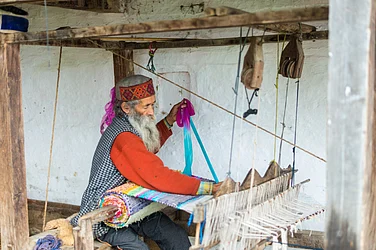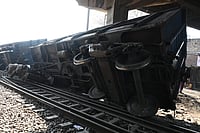As one more South African cheetah died in Madhya Pradesh's Kuno National Park (KNP) on Tuesday, some serious concerns are being raised now on India's reintroduction effort associated with Project Cheetah.
Death of the male cheetah Tejas marked the seventh feline fatality in last four months.
At a high-profile event attended by Prime Minister Narendra Modi last year, eight Namibian cheetahs, five female and three male, were released into enclosures at KNP while 12 more were added in February this year.
Death of Tejas
"Cheetah Tejas, aged around four years, died in KNP due to suspected infighting," Principal Chief Conservator of Forest (PCCF) Wildlife J S Chauhan told PTI.
According to the official, Tejas was in an enclosure at the time of the incident.
The official press release noted that the monitoring team spotted some injury marks on the neck of Tejas in enclosure number 6 at around 11 am on Tuesday following which veterinarians were called.
Upon getting due approval for tranquilizing the injured cheetah, a team of veterinarians reached the spot at around 2 pm, but the feline was found dead already.
An investigation was underway and the exact cause of death would be known after receiving the post-mortem report, it said.
About the deaths of other cheetahs at Kuno
In a major setback to the reintroduction programme launched by the Centre in September last year, seven felines, including three cubs born to Namibian cheetah 'Jwala', have died so far at Kuno National Park since March.
Before the death of Tejas, three more India-born cheetah cubs died at KNP on May 23 due to "sweltering heat and weakness".
According to the official press release, the daytime temperature in Madhya Pradesh at that time was around 46-47 degrees Celsius.
The cubs were found severely dehydrated. Despite treatment, they could not be saved, the release stated.
Cheetah Jwala had given birth to four cubs in March this year.
Earlier on March 27, one of the Namibian cheetahs, Sasha also succumbed to a kidney-related ailment while another cheetah, Uday, from South Africa, died on April 13.
Daksha, another one from South Africa, died of injuries following a violent interaction with a male feline during a mating attempt on May 9.
Factors behind the deaths
From weakness, dehydration and organ failure to exposure to heat and infighting- several reasons have been cited so far to explain the deaths of the felines.
According to the South African wildlife expert Vincent van der Merwe, who is very closely associated with the Indian government's 'Project Cheetah', the mortality rate of these cheetahs amid their reintroduction is expected to see a massive spike in the coming months where the rate could shoot up to 50%.
“We anticipate a 50 per cent mortality in the first year, we know that only 10 are going to survive the initial release period. There's going to be more than enough prey for them,” he said.
When asked about the reason, Merwe said that the deaths will be higher as they will try to establish territories and encounter leopards and tigers inside the national park.
He further elaborated that the recent deaths were within the acceptable range. However, their deaths outside of the fenced enclosures is where the real danger lies.
"That's where you can expect mortality due to hunting injury. The cheetahs, of course, will continue to establish territories and fight with each other and kill each other for territories and for access to females. They're going to encounter leopards. There are now tigers moving around in Kuno. The worst mortalities are still to come," he added.
What can be done to save the cheetahs?
According to Merwe, fencing the habitats in a bid to control giving access to other animals can help.
Fencing can also can reduce the overall threat to these reintroduced cheetahs.
He later elaborated that Africa tried for reintroduction of cheetahs in an unfenced reserve for 15 times and failed every single time.
Considering the lack of space and logistical support in Kuno park, several experts including Merwe, have recommended relocation of the cheetahs to other sanctuaries.
Merwe recommended getting at least two to three cheetahs to Mukundra Hills and let them breed there.
"Mukundra Hills is fully fenced. We know that cheetahs will do very well there. The only problem is that it's not fully stocked at the moment. So you'll have to bring in some black buck and chinkara. And when the fencing is completed at Nauradehi and Gandhisagar, we will have three fenced reserves and then we are absolutely winning," he said.


























